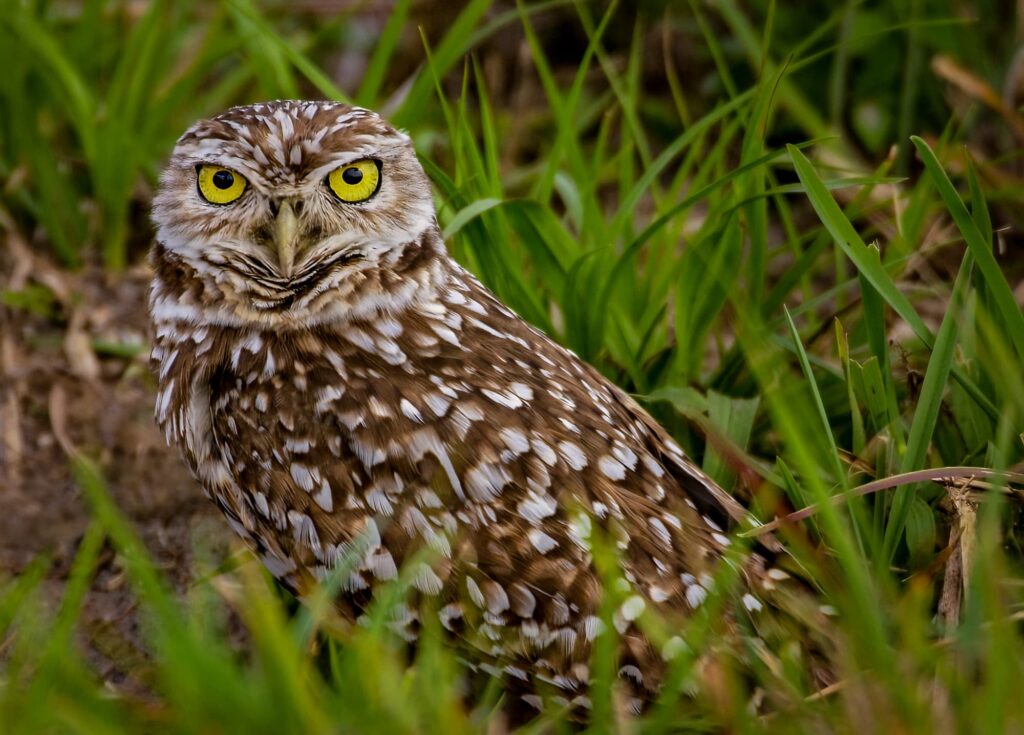
Grasslands are rich ecosystems that support a diverse array of wildlife, particularly avian species. In North America, vast prairies stretch across the land, and these expansive, open habitats are crucial for the survival of many bird species. In today’s blog, we look at four species whose very existence depends on these deceptively complex habitats.
When you think of tough, resilient terrain that can survive the extremes of heatwaves or sudden drops in temperature during cold snaps, hurricanes, and torrential storms, and life-ending droughts, maybe you picture a vast featureless expanse of rock and earth. Few of us would automatically picture the rolling and multi-hued vistas of America’s iconic grasslands, but these landscapes are some of the hardiest there is, and their fecund diversity means the role they play in the stability of all ecosystems can never be understated. Such tame-looking habitats are absolutely vital.
Not only do the vast grass root systems store carbon underground, helping to mitigate climate change by reducing atmospheric CO2 levels, but they also prevent soil erosion, enhance soil fertility, and help regulate the water cycle, which in turn mitigates the impacts of floods and droughts.
They are also home to a monumental variety of wildlife, including pollinators like bees, Monarch and other butterflies, and other insects, they are vital for the livelihoods of human communities around the world, and they provide nesting sites, food resources, and sanctuary to many mammals like bison, and a diverse range of bird species.
But despite their importance, grasslands have suffered significantly in recent decades, particularly due to agricultural expansion and urban development, which in turn pose an existential threat to the birds that rely on them. Covering approximately 1.4 million square miles, the North American grasslands, including the Great Plains, were once a continuous stretch of native grasses and wildflowers. Today, however, less than 40% of these grasslands remain intact, with native prairie covering even less. This dramatic reduction has had profound effects on the birds who rely on this incomparable resource, who are now known to have experienced some of the most severe population declines of any bird group in North America, with many species seeing reductions of more than 50% over the past 50 years.

Ferruginous Hawk
The ferruginous hawk, North America’s largest hawk, is a perfect example of dependence on these grasslands. These hawks requires vast, undisturbed tracts of land for hunting, as their wingspan that can reach up to 56 inches makes them a formidable raptor, preying on small mammals such as prairie dogs and ground squirrels.

Sprague’s Pipit
Over the thin and wavering grasses, you may be fortunate enough to hear the unobtrusive Sprague’s pipit sings its melodious song. This small, brown-streaked bird is one of the few species that sing while soaring high in the sky. Sprague’s pipits prefer native mixed-grass prairies for nesting and foraging, but unfortunately their numbers have declined by over 80% in the past few decades due to habitat loss and degradation.

Baird’s Sparrow
Baird’s sparrows are small birds with striking yellowish faces and a finely streaked crown with a dark central stripe, and they have a wonderful melodic song. This bird breeds in the northern Great Plains, favoring areas with dense mixed and tallgrasses and few shrubs. Baird’s sparrows are particularly sensitive to habitat change and fragmentation, and studies have shown that they require large, contiguous tracts of grassland to maintain stable populations.

Burrowing Owl
Perhaps one of the most unexpected birds to dwell in these habitats, the burrowing owl presents a unique and fascinating aspect of grassland avian life. These small, long-legged owls are known for their distinctive bobbing movements and piercing yellow eyes. Unlike most owls, they are active during the day and, as the name suggests, live in burrows, often taking over those dug by prairie dogs. They play a critical role in controlling insect and small mammal populations, but prairie dog populations have also been declining due to loss of habitat, which has led to a significant decrease in burrowing owl populations.
Each of these trends has been going in the same direction for too long, making conservation initiatives crucial. Programs that promote sustainable agricultural practices, restoring native prairie, and protecting large contiguous areas of grassland are vital. Over 80% of America’s grasslands are privately owned, which has in the past posed significant barriers, but organizations like the Great Plains Conservation Network and various governmental agencies are now working tirelessly with ranchers and other grassland owners to educate them about the multifaceted and intertwined life cycles that exist on their land. There are positive signs in the uptake and implementation of these strategies, and government grants are available for all sorts of assistance. Some infrastructure projects as simple as fencing has enabled rotational grazing, which means that the animals kept on grasslands don’t overgraze and destroy the root systems, which makes many prairies impossible to restore. By rotating and resting different areas, as well as re-introducing prescribed controlled burns, the soil and vegetation is replenished.
Protecting and restoring grasslands is not just about preserving these and many other birds; it’s about maintaining the ecological balance and health of an entire biome. By understanding and acting on the needs of birds who call grasslands their home, we can take important steps towards ensuring their resilience and the natural diversity of North America’s iconic and alluring landscapes.


